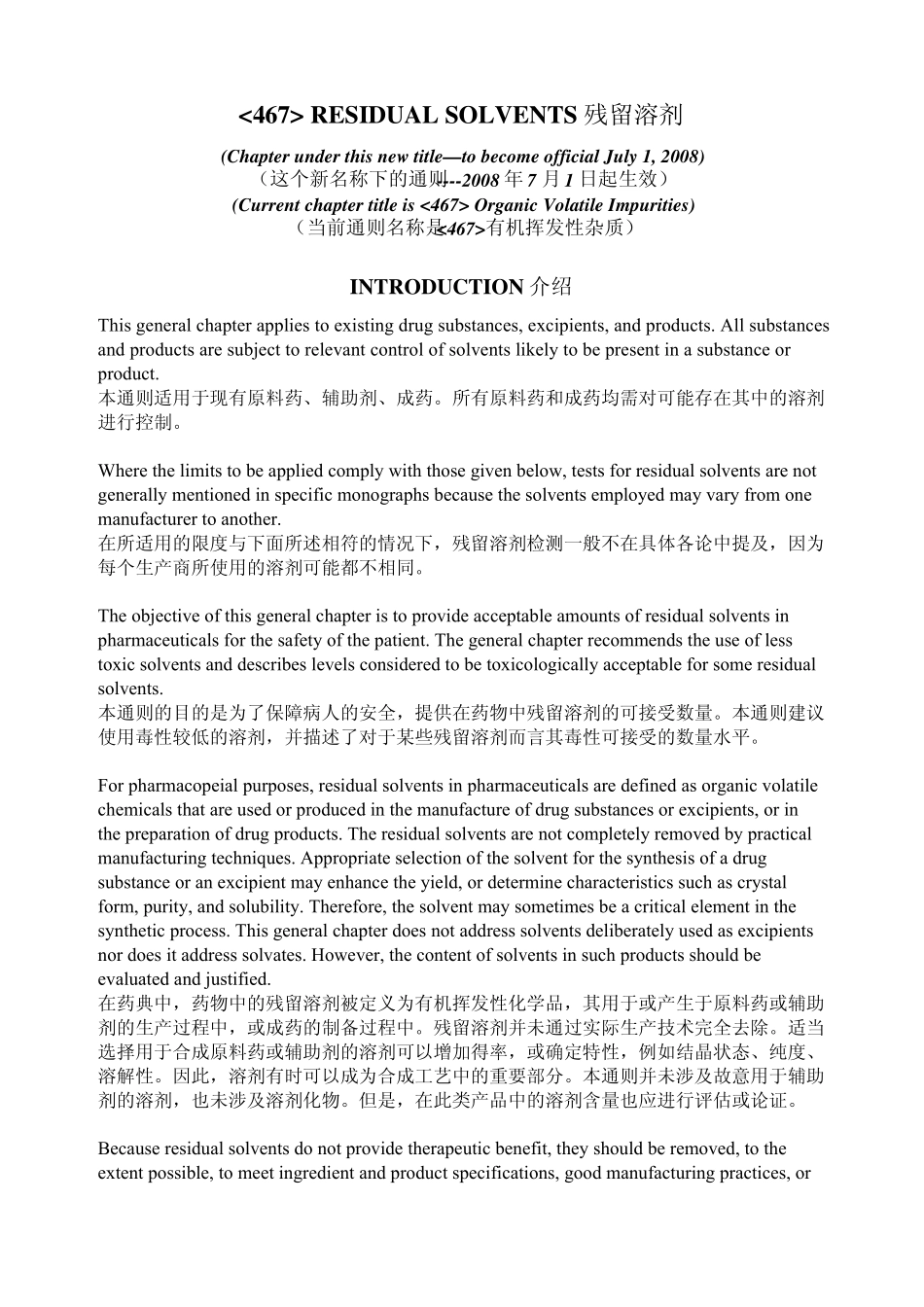<467> RESIDUAL SOLVENTS 残留溶剂 (Chapter under this new title— to become official July 1, 2008) (这个新名称下的通则----2008 年7 月1 日起生效) (Current chapter title is <467> Organic Volatile Impurities) (当前通则名称是<467>有机挥发性杂质) INTRODUCTION 介绍 This general chapter applies to existing drug substances, excipients, and products. All substances and products are subject to relevant control of solvents likely to be present in a substance or product. 本通则适用于现有原料药、辅助剂、成药。所有原料药和成药均需对可能存在其中的溶剂进行控制。 Where the limits to be applied comply with those given below, tests for residual solvents are not generally mentioned in specific monographs because the solvents employed may vary from one manufacturer to another. 在所适用的限度与下面所述相符的情况下,残留溶剂检测一般不在具体各论中提及,因为每个生产商所使用的溶剂可能都不相同。 The objective of this general chapter is to provide acceptable amounts of residual solvents in pharmaceuticals for the safety of the patient. The general chapter recommends the use of less toxic solvents and describes levels considered to be toxicologically acceptable for some residual solvents. 本通则的目的是为了保障病人的安全,提供在药物中残留溶剂的可接受数量。本通则建议使用毒性较低的溶剂,并描述了对于某些残留溶剂而言其毒性可接受的数量水平。 For pharmacopeial purposes, residual solvents in pharmaceuticals are defined as organic volatile chemicals that are used or produced in the manufacture of drug substances or excipients, or in the preparation of drug products. The residual solvents are not completely removed by practical manufacturing techniques. Appropriate selection of the solvent for the synthesis of a drug substance or an excipient may enhance the yield, or determine characteristics ...


